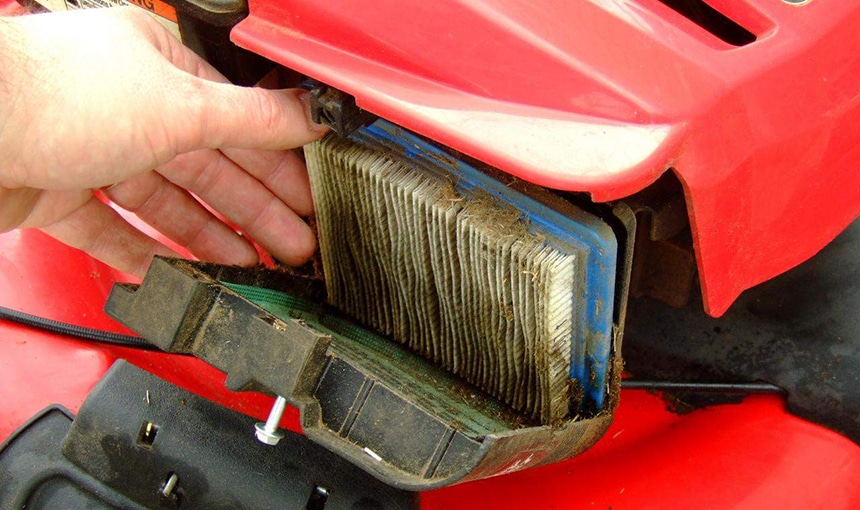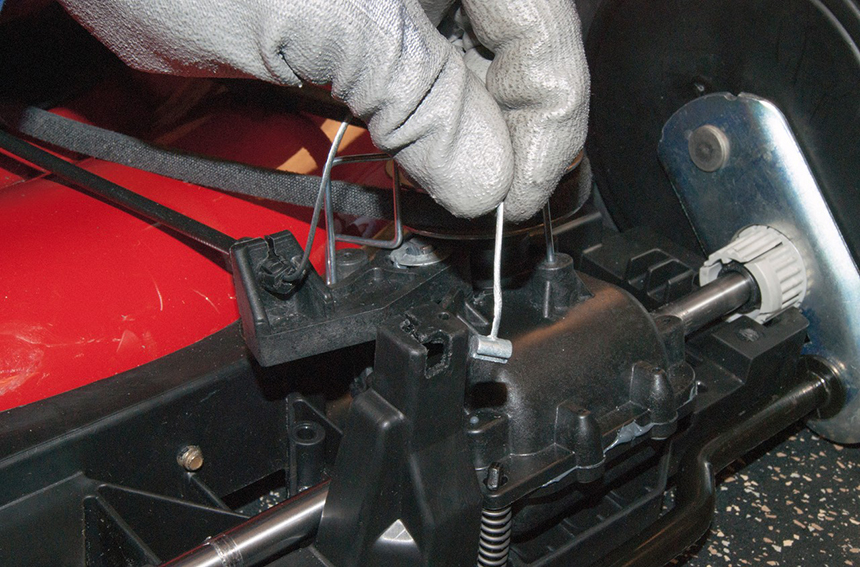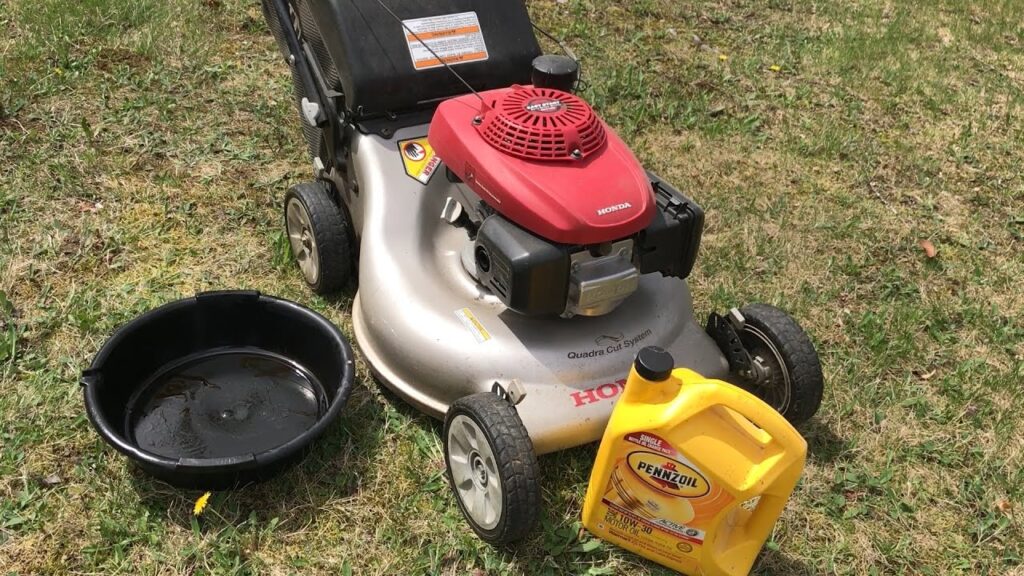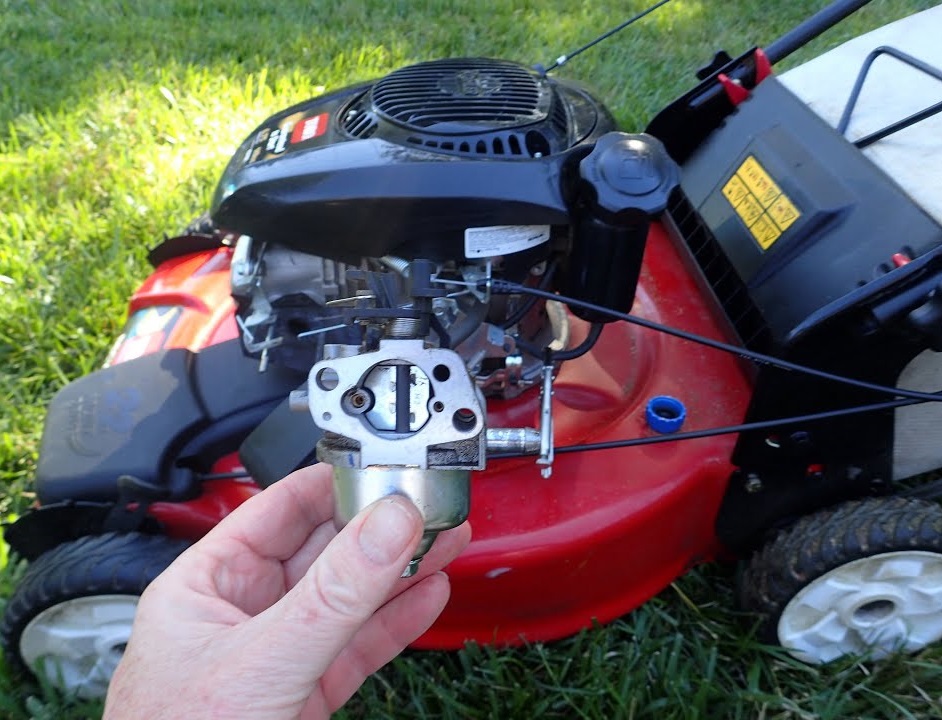Nothing is more frustrating than a lawn mower’s engine that turns over but won’t start, especially when it’s the grass-cutting season. The disappointment is inevitable as even a top-quality lawnmower from reputable brands like Briggs and Stratton can fail to start. Failure to start may be due to various reasons, including a damaged safety cable, clogged air filter, soiled spark plug, clogged mowing deck, or contaminated gas. A lawnmower usually won’t start because of issues with its carburetor or gas. Before you rush to spend an arm and a leg on replacement parts, check out for any issues with the fuel and carburetor. This article has all the hints and tips on reviving a lawnmower that won’t start. You will need a few hand tools, a can of carburetor cleaner, a socket set, and an air compressor for the DIY.
As mentioned earlier, there are multiple reasons why your lawn mower may not start. The top two are usually issues with the fuel and the carburetor. According to Husqvarna Trusted Source Husqvarna FAQ : Product support If the engine has been started the choke needs to be off. Attempting to start a warm engine with the choke on will cause excessive fuel to enter the cylinder and flood the engine. If the engine is flooded put the throttle control to full throttle (making sure that you do not put the control into the choke detent if the unit has the choke and throttle on the same control) and crank the engine over. This will push out the excess fuel and allow the engine to start. husqvarna.custhelp.com , when the engine turns over but it does not start, it is highly likely that there is no incoming air or the fuel is not reaching the engine. The gas could be contaminated, or the air filter could be clogged. A clogged mowing deck or a damaged safety cable could also be the issue. If you are looking to get yourself a riding or a self-propelled lawnmower, read our articles about the best riding lawn mowers and the best self-propelled lawn mowers to make the best-informed choice.
The most acclaimed walk-behind lawn mower is the EGO Power+ LM2000-S. It packs a punch with multiple advanced features and superior weather-resistant build quality. The Greenworks Pro 80V is also a popular suggestion among expert reviewers. It is incredibly versatile as you can mulch, side discharge your grass clippings, or rear bag.
Here are some easy ways to fix your grass guzzler if it has any of the problems mentioned above.

When it becomes clogged or dirty, the engine may fail to start. Clogged air filter Trusted Source My Craftsman Push-Mower Engine Won't Start With the Air Filter On | Home Guides | SF Gate When you try to start a cold engine with less air, the fuel can’t burn, and it accumulates in the chamber, flooding the engine. Even if the engine turns over, a lack of air will cause the fuel to burn inefficiently and smoke. Under those conditions, the engine may sputter and quickly die. The smoke compounds the problem by soiling the air filter and the spark arrestor screen, if the engine has one. homeguides.sfgate.com is a top reason for a mower’s failure to start. You can prevent clogging in the air filter by replacing the filters if they are paper filters or simply cleaning them if they are foam filters. Filter replacement varies across different types of mowers. For instance, for a riding mower, you have to turn off the engine and raise the parking brake. For a walk-behind mower, you have to pull the spark plug wire from the plug and then lift the filter from its housing.
If your mower has a foam filter, you can clean it instead of replacing it. As for paper filters, you have no choice but to replace them. You can clean the foam filter in a solution of hot water and detergent. Let it dry completely, then apply fresh motor oil over it before replacing it in its housing. Try and power up the mower, and if the filter was the issue, you would hear the pleasant whirring of the engine.
The spark plug creates the spark that ignites the fuel in the mower’s engine. It may be the reason why your lawnmower isn’t starting if it is disconnected, loosened, coated in water, or has carbon residue. To fix the spark plug issue, you must first locate it on the front of the mower. Disconnect the spark plug wire to reveal the plug underneath. Grab a socket wrench and use it to unscrew the spark plug before removing it. Have a look at the electrode and insulator. If there is any buildup, spray the plug with some brake cleaner and let it soak for a few minutes, then wipe it with a clean cloth.
Put the spark plug back in place with your hand first, then use a socket wrench to tighten it. Start the mower and if the problem persists, try and get a new spark plug.
Many people often assume a machine’s failure to start is purely an engine problem, but that is not usually the case. An issue with a safety feature can also cause a machine’s reluctance to start. According to an article by the University of Minnesota Trusted Source Mowers and mowing safety | UMN Extension Rotary lawn mowers have a whirling horizontal blade. Rotating blades have the potential for throwing stones or other small objects in the path of the mower. Therefore, rotary lawn mowers can be more dangerous to operate than reel lawn mowers. extension.umn.edu , virtually all mowers have safety features for mowing safety. The safety bar, in particular, is a common feature, and it must be held in place by the operator for the mower’s engine to start. Although it prevents lawnmower accidents, if released, it can be a reason for the mower’s failure to start.

If the metal cable is broken or damaged, you have no choice but to replace it because the engine will stop functioning. Luckily, replacing the cable is child’s play. Order a new one from your mower’s manufacturer. You may have to wait a few days before receiving the shipment.
The mowing deck prevents grass clippings from flying into the air, but they can also collect on it and cause clogging. The mower’s deck is more prone to clogging when the grass is wet. You will know the deck is clogged if the starter rope appears to be stuck or is difficult to pull. Clogging also prevents the blade from turning. If you suspect the mowing deck is closed, turn off the mower, then tip it over onto its side and check beneath its belly. You can use a trowel to scrape off clumps of cut grass stuck between the blade and the deck. After cleaning the deck, set it back on its feet and start it up.
If you start the mower, make a few first passes, then it dies all of a sudden, or you pull the cord, then the engine sputters and dies all of a sudden; it is time to get a new fuel cap. Virtually all mowers come with a vented fuel cap. The vent releases pressure and controls the flow of fuel from the tank to the carburetor. The vent is pretty essential, as, without it, gas fumes can build up inside the tank and create a strong vacuum that can stop the flow of fuel. If this is the issue, you can simply open the gas cap to break the vacuum and then reattach it.
After breaking the vacuum in the fuel tank, you can start up the mower and if it still behaves the same way, just get a new fuel cap.
This is one of the most overlooked Trusted Source Briggs & Stratton A typical cause for this is that the engine flywheel brake (the bar you hold down on the handle that stops the engine when released) is engaged. Be sure to bring the bar down all the way to the handle before pulling. www.briggsandstratton.com reasons why a lawn mower may fail to start. If the fuel tank is empty or it contains old or contaminated gas, the engine may not function. If the fuel in your mower is more than a month old, siphon it out with a pump because there is a high chance it is contaminated with excess moisture and dirt.
After draining the contaminated fuel, fill up the tank with fresh fuel and use a fuel stabilizer to extend its life. Another thing that could prevent your mower from starting is a clogged fuel filter. If your mower has a fuel filter, examine it to ensure it is functioning properly because a clogged fuel filter prevents the engine from accessing the gas that makes the system go. To check if the fuel filter is okay, remove the fuel line at the carburetor, then remove the fuel line ahead of the fuel filter inlet. You will know the fuel filter has issues if you notice gas flowing out freely. If that’s the case, read your user manual about the fuel filter replacement.
Bad gas is usually the main cause of this. If gas sits in your mower’s fuel tank for months, it can get contaminated and jam up the fuel line and carburetor in the engine, preventing it from functioning normally.
A lawnmower can be hard to start if the air filter is clogged, the mowing deck is clogged, the fuel tank is empty or filled with old gas, or the carburetor is dirty. You can use a screwdriver to remove the carburetor for cleaning. As for a clogged air filter, clean or replace it. If the mower still won’t start, check the fuel tank and fill it up with fresh fuel.
The most likely reason for an electronic mower to stop working is a damaged cord. When an electric mower is in use, the cords are flexed and pulled repeatedly, and this can damage their insides, preventing them from carrying the electric current the mower’s motor needs to run.
Everyone wants their lawnmower in top shape at the beginning of spring, the grass cutting season. What could be more frustrating than pulling a lawn mower’s starter code repeatedly on an early murky Saturday morning? If your lawnmower won’t start, try the tips we have provided before rushing it to the repair shop or leaving it by the curb for bulk trash pickup. Your toolbox may be all you need to salvage the mower. Of course, you need to have a little understanding of how lawnmowers work. Just keep in mind that gas and carburetor issues are the main possible reasons why a lawn mower may fail to start. Fixing the issues yourself will not cost you much unless some parts like an air filter need replacement. You will only need a few hand tools, a socket, and an air compressor which you can get from your toolbox if you are a handy person.





